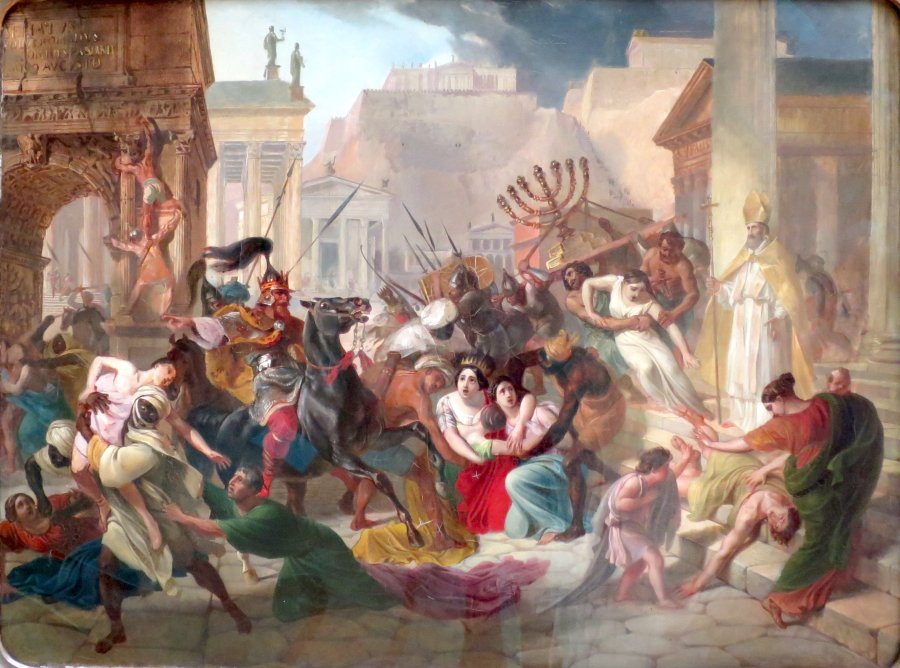Believed to have originated in Scandinavia, the Vandals were an East Germanic tribe, first mentioned in the Natural History of Pliny the Elder (77 CE), then by Tacitus in his Germania (98 CE).
The origin of their name is still covered in mystery, and we cannot even tell for sure if Vandals was actually their name, as Tacitus also refers to them as Lugi. If in the past the word “Vandal” (Vandilii, according to both Pliny and Tacitus) meant something similar to “wanderer”, today has become a synonym of destruction and generally violent behaviour, due to their ferocity whilst attacking Rome and other cities of the Roman Empire.
The Vandals broke through the Roman borders as early as 270 CE, becoming part of the Roman history since then.
When, during the fifth century, the Huns were dangerously expanding, the Vandals were forced to flee westwards, invading Gaul and devastating most of it, until they settled in Spain around 409 CE. Attacked by both Romans and Visigoths (who also had settled there), two of the three major tribes were defeated, leaving Gunderic, king of the Asdingi Vandals, as the only leader of his people. In 429, Gunderic’s successor, his brother Gaiseric, decided to move again, crossing the sea and forming a new kingdom in North Africa: recognised as Roman federates in 435, the Vandals were soon led to war against Rome, taking Carthage in 439 and from there sailing towards Sardinia, Corsica, and Sicily; final destination was Rome itself. Captured in 455, after most of the western Mediterranean had already fallen under Vandal control, Rome suffered for a fortnight the continuous plundering of its most valuable treasures, along with the careless devastation of the city and its buildings.
The Vandals were also fervent Arian Christians, and for the best part of their kingdom’s life they persecuted the Catholics of Africa, executions being particularly fierce especially under Gaiseric’s successor, Huneric.
At his death, however, a few followed before his son could take the throne. Hilderich was in his mid-sixties when he was crowned and, being a close friend of the emperor Justinian I, he not only decided to stop the persecution of the Catholics, but also called the bishops back, officially restoring Catholicism in Africa. However, most of the Vandals were still deeply anti-Trinitarians (according to the Arianism belief, the three persons of the Father, the Son, and the Holy Spirit, could not truly be one, as the Son was created, and not eternal and unmade like the Father), so a rebellion arose, and Gelimer took the power, dethroning Hilderich – and eventually killing him, his family, and many of his friends – and reinstating the old rules. The Byzantine emperor Justinian immediately sought the chance to rid Africa of the Vandals for good, and in 533 the commander Belisarius invaded North Africa and destroyed the Germanic kingdom in a single military campaign (the Vandals themselves were partly to blame for their defeat, not being able to pursue the three-pronged attack they intended to).
Rome – the Eastern Roman Empire – was once again the political ruler of those territories, and the Catholic Church the religious leader.
The Vandals, on the other hand, disappeared, playing no further, relevant, role in history.
*featured image: Gaiseric, king of the Vandals, invades Rome in 455 CE.
